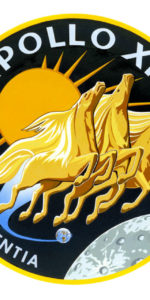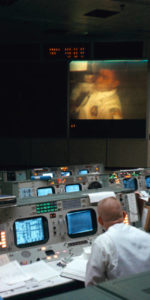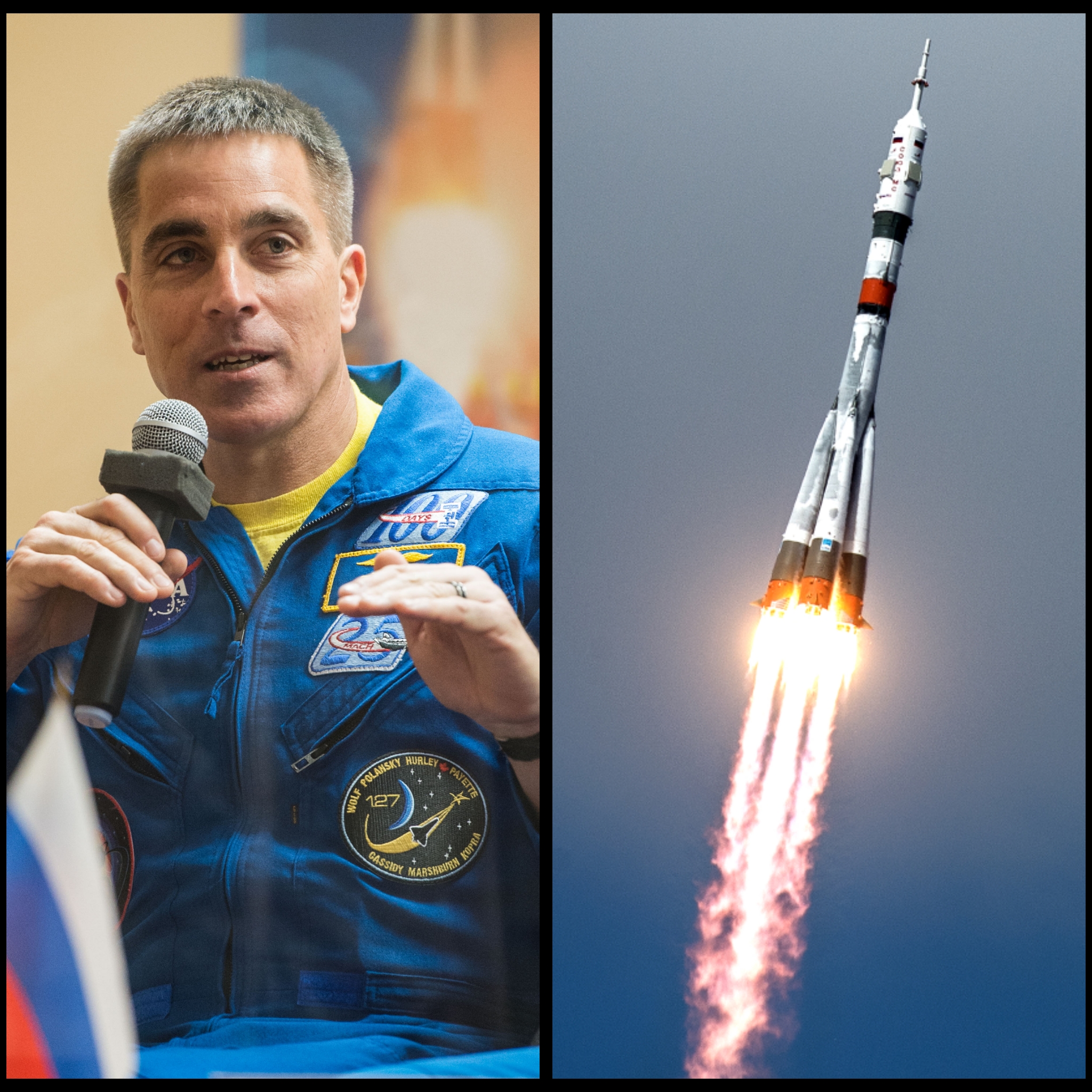
One of the most shielded groups of spacefarers in history lifted off from Kazakhstan’s Baikonur Cosmodrome on Thursday, 9 April, departing a world of self-isolation and headed for their own brand of isolation at the International Space Station (ISS). Russian cosmonauts Anatoli Ivanishin and Ivan Vagner—newly appointed to the Soyuz MS-16 prime crew, having previously pulled backup duty—and former NASA Chief Astronaut Chris Cassidy will spend more than six months living and working aboard the sprawling multi-national outpost in the sky. If all goes well, they will welcome the first two piloted Commercial Crew spacecraft later this summer, together with two Russian Progress resupply ships, one Japanese Kounotori H-II Transfer Vehicle (HTV) and one Northrop Grumman Corp. Cygnus cargo craft. Ivanishin, Vagner and Cassidy will also support hundreds of research experiments and a raft of spacewalks during their time aloft.
Following arrival on the station, the new crew will have little time to acclimatize, given that they have only a week of “handover” with the incumbent Expedition 62 team of Commander Oleg Skripochka and Flight Engineers Drew Morgan and Jessica Meir. In NASA interviews broadcast last month, Cassidy noted that he will spend the handover time soaking up Morgan and Meir’s knowledge before they are due to depart aboard Soyuz MS-15 and return to Earth on 17 April. Cassidy will assume command of the station to lead Expedition 63 and will become the first U.S. skipper of the ISS in over 18 months.
He and Ivanishin and Vagner expect to remain a three-man crew for a few weeks, before the piloted Demo-2 mission of SpaceX’s Crew Dragon arrives with NASA veterans Doug Hurley and Bob Behnken in the mid-to-late May timeframe. In doing so, they will become the first U.S. astronauts to ride a U.S.-built spacecraft, atop a U.S.-built rocket, and from U.S. soil, since the end of the Space Shuttle era in July 2011. And interestingly, Hurley was pilot of STS-135, the final shuttle crew, which will allow him to serve as a unique torch-bearer as one generation of U.S. manned space vehicles gives way to the next. Hurley will serve as spacecraft commander of Demo-2, with Behnken—also a former NASA Chief Astronaut—carries the unique designator of “joint operations commander”.
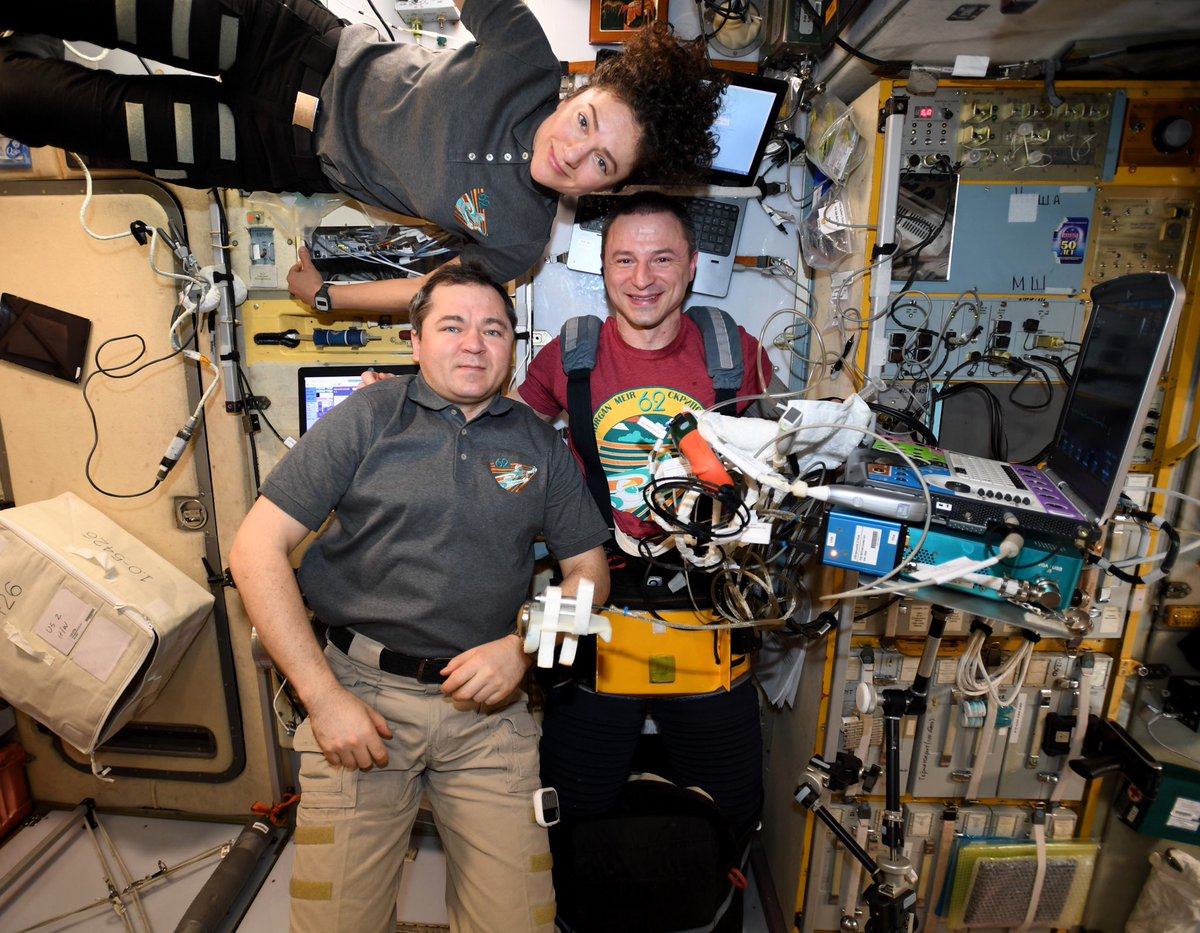
NASA is keen to minimize the amount of time with only a single U.S. crewman aboard the ISS and it remains to be seen if Hurley and Behnken will spend two weeks or perhaps several months aboard the station. Certainly, in recent weeks, Behnken has been conducting EVA proficiency training which may put him in pole position to join Cassidy on a series of challenging spacewalks to complete the installation of new hardware onto the exterior of Europe’s Columbus lab and fit six new lithium-ion batteries into the station’s S-6 truss. But Cassidy remains guarded in his optimism. “If you want to make God laugh,” he quipped last month, “tell him your plans!”
And those plans have certainly changed in recent months. Cassidy was assigned to this mission last October, when it became clear that Commercial Crew vehicles would not be online in time and a very real possibility existed that there would be no U.S. presence on the ISS from April 2020. He was to be joined by “rookie” cosmonauts Nikolai Tikhonov and Andrei Babkin. However, in February 2020 Tikhonov sustained an eye injury which resulted in the entire Russian side of the crew—including Babkin—to be replaced by their backups, Anatoli Ivanishin and Ivan Vagner.
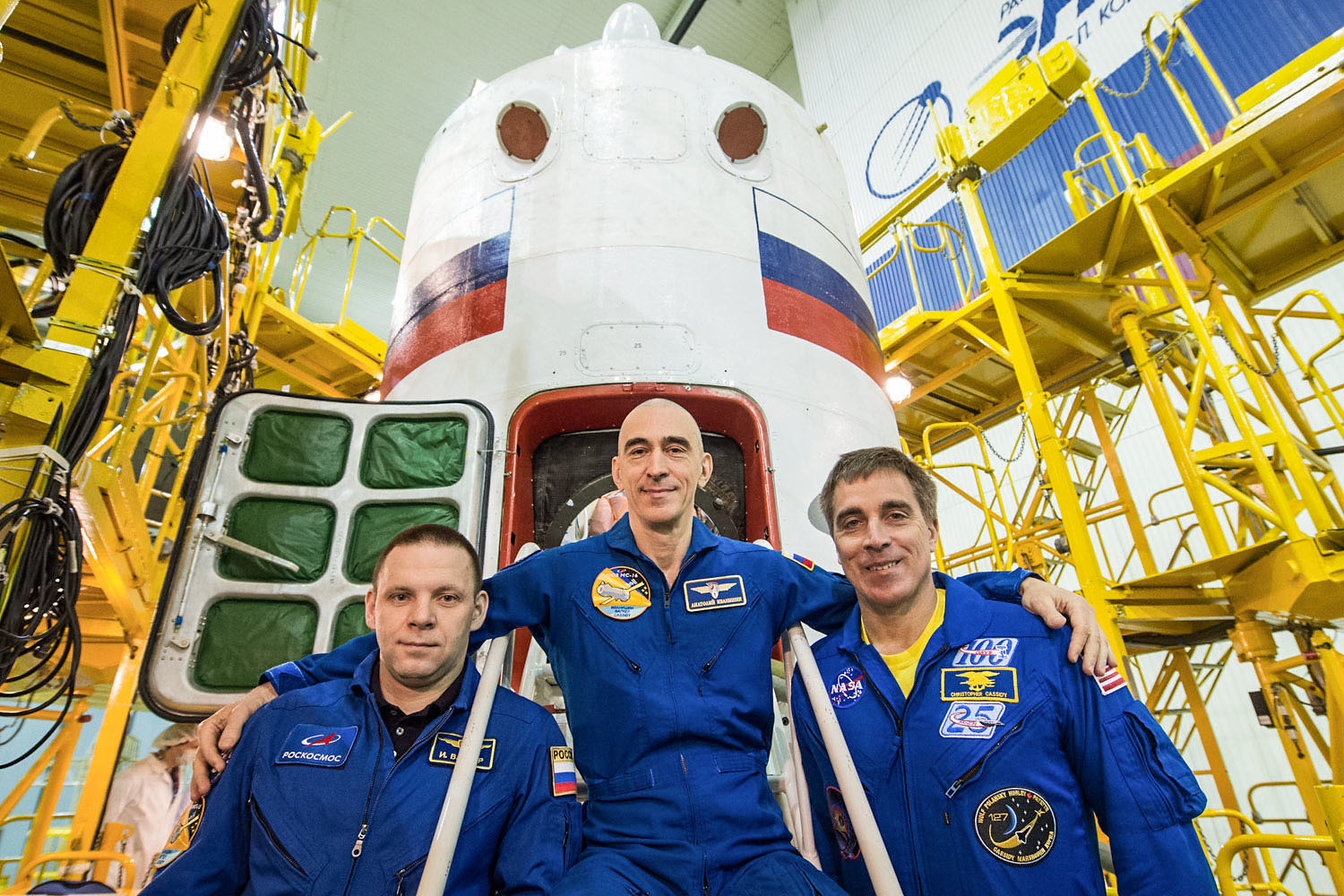
Cassidy, however, retained his seat on the prime crew, with fellow veteran NASA astronaut Steve Bowen retaining his own seat on the backup crew. Babkin was correspondingly paired with seasoned cosmonaut Sergei Ryzhikov—who spent six months on the station in 2016-2017—to form the new Soyuz MS-16 backup crew. But it must have been a bittering crushing blow for Tikhonov, however, who has been progressively “bumped” from no fewer than three ISS-bound Soyuz crews. He was dropped from Soyuz MS-04 in the fall of 2016 when budget cuts forced a reduction in the number of Russian cosmonauts aboard the complex, then was pulled from the ill-fated Soyuz MS-10 due to the lengthy delays affecting the launch of the Nauka (“Science”) research facility and again from last year’s Soyuz MS-15 in the wake of further crew changes.
“My heart hurt for my two friends,” Cassidy told an interviewer last month, “who thought they were so close to a rocket launch.” Added to the mix has been the devastating worldwide march of the COVID-19 coronavirus, which plunged not only the prime and backup crews into quarantine, but also their support personnel. The traditional interdepartmental commission last month saw the crew participate remotely and usual pre-flight ceremonial acts, including the trip to Moscow’s Red Square, were set aside. The prime crew and their backups flew from the Star City cosmonauts’ training center, on the forested outskirts of Moscow, to Baikonur on 25 March to begin a two-week period of quarantine.
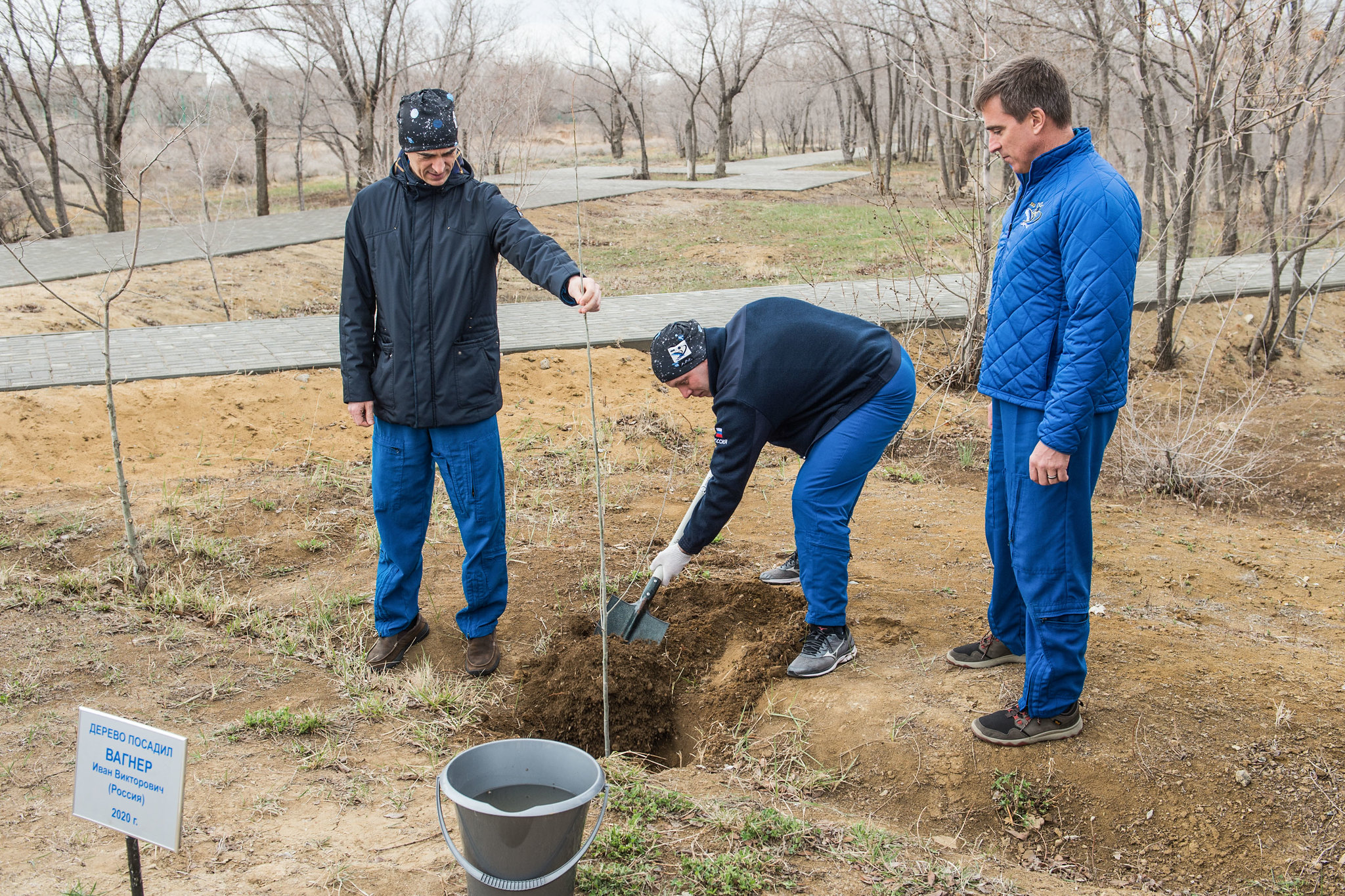
The Soyuz MS-16 spacecraft arrived at Baikonur for processing last November and earlier this year the crew’s Soyuz-2.1a booster was delivered to begin inspections and pre-flight testing. Although the Soyuz-2 has a long and chequered history as an unmanned launcher—with around a hundred successful flights to its credit and a 97.7-percent success rate since October 2006—today’s mission was the first time it had launched humans. Equipped with improved flight control and telemetry systems compared to the earlier Soyuz-FG booster, the 2.1a also saw service to launch the uncrewed Soyuz MS-14 to the space station in August of last year. On Monday, 6 April, it was rolled out to Site 31/6 at Baikonur and raised to the vertical at the pad surface. This particular launch complex has seen scant use in Soviet and Russian spaceflight history and today’s liftoff was only the second flight from Site 31/6 since Soyuz MS-02 in October 2016.
Commanding Soyuz MS-16 is 51-year-old Anatoli Ivanishin, a veteran of two previous ISS increments with 280 days in space and a retired colonel in the Russian Air Force. Born in Irkutsk in southern Siberia in January 1969, he unsuccessfully attempted to enter the Chernigov Higher Military Aviation School for Pilots after high school. Instead, Ivanishin completed a year at the Irkutsk Polytechnic Institute and was successful in entering the prestigious Chernigov school in 1997, graduating with a gold medal in 1991. He went on to serve in the Russian Air Force, flying MiG-29 jets in the Borisoglebsk military unit in the Voronezh region and later flying Su-27 jets in Karelia as part of the Sixth Air Army. During his military career, Ivanishin also completed 180 parachute jumps.
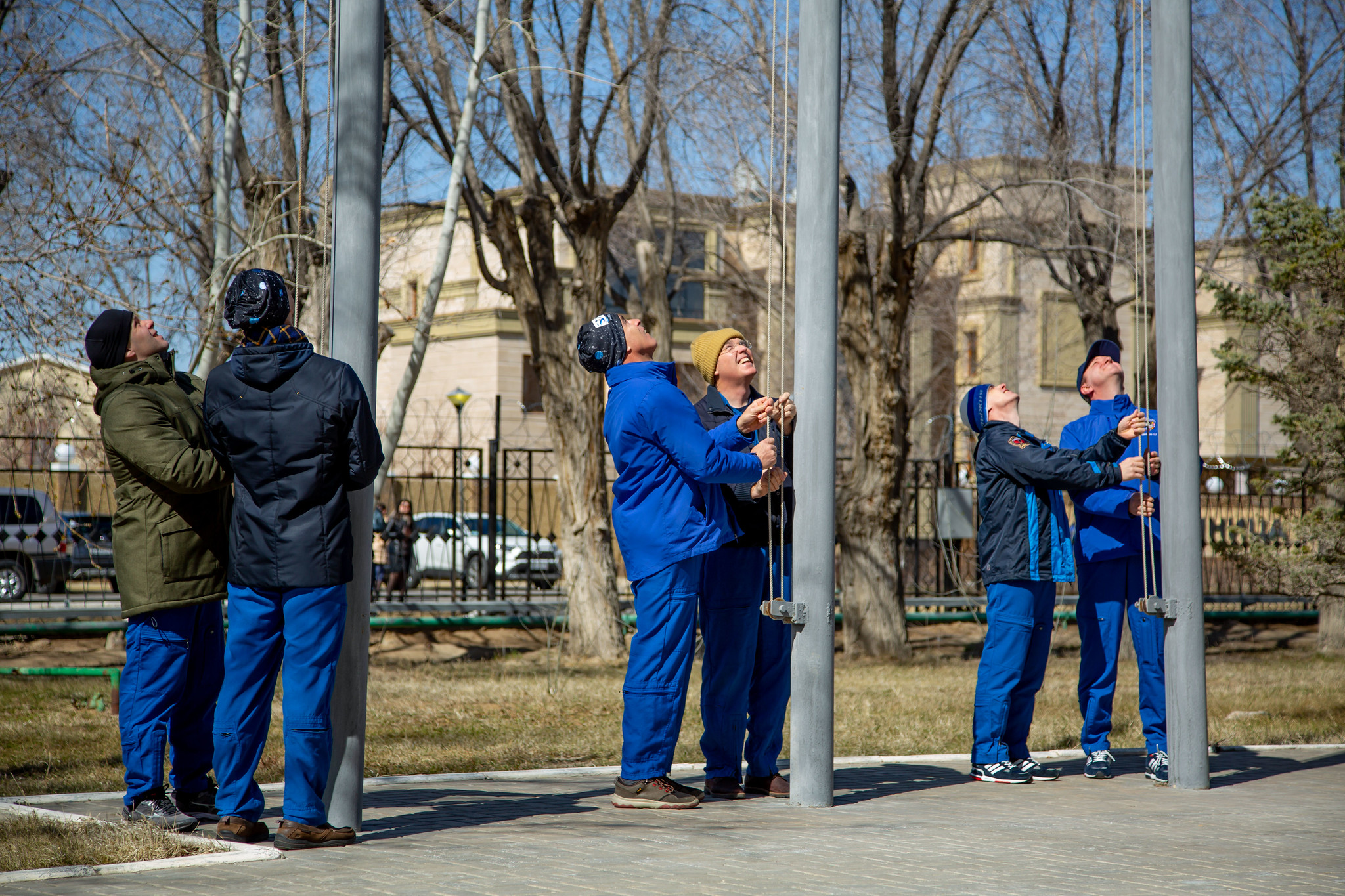
He completed a correspondence course in economics, statistics and information theory at Moscow State University in 2003 and in May of that same year was selected as a cosmonaut candidate. Ivanishin completed training in June 2005 and first served as backup commander for Soyuz TMA-20, launched in December 2010, before rotating into the prime crew for Soyuz TMA-22, which lifted off from Baikonur on 16 November 2011. Flying shoulder-to-shoulder with fellow Russian cosmonaut Anton Shkaplerov and NASA veteran Dan Burbank, he completed 165 days in orbit as part of Expeditions 29 and 30, before returning to Earth on 27 April 2012. Ivanishin next commanded the first flight of the upgraded Soyuz-MS spacecraft, launching alongside Japan’s Takuya Onishi and NASA astronaut Kate Rubins on 9 July 2016. The trio spent almost four months in space, spanning Expeditions 48 and 49, with Ivanishin commanding the ISS from September 2016 until his crew’s return to Earth on 30 October. At the end of his second spaceflight, he logged 280 days in orbit.
Shoulder-to-shoulder at Ivanishin’s left side in Soyuz MS-16, in the Flight Engineer-1 couch, was “rookie” spacefarer Ivan Vagner. Thirty-four years of age, the civilian engineer was born in the village of Severoonezhsk, in the extreme north of European Russia, in July 1985. He studied engineering at the Baltic State Technical University and graduated with a master’s degree in aeronautical engineering in 2008, whilst also serving as a military reservist. Vagner then worked for RKK Energia as an ISS assistant flight manager. He was picked as a cosmonaut candidate in October 2010 and completed initial training in August 2012. His first backup flight assignment was to Expeditions 53/54, but he was removed due to the Russian crew complement changes in late 2016. And as disappointing as that must have been for Vagner, the decision in recent weeks to move him from backup to prime crew on Soyuz MS-16 can surely have brought the young cosmonaut great delight.
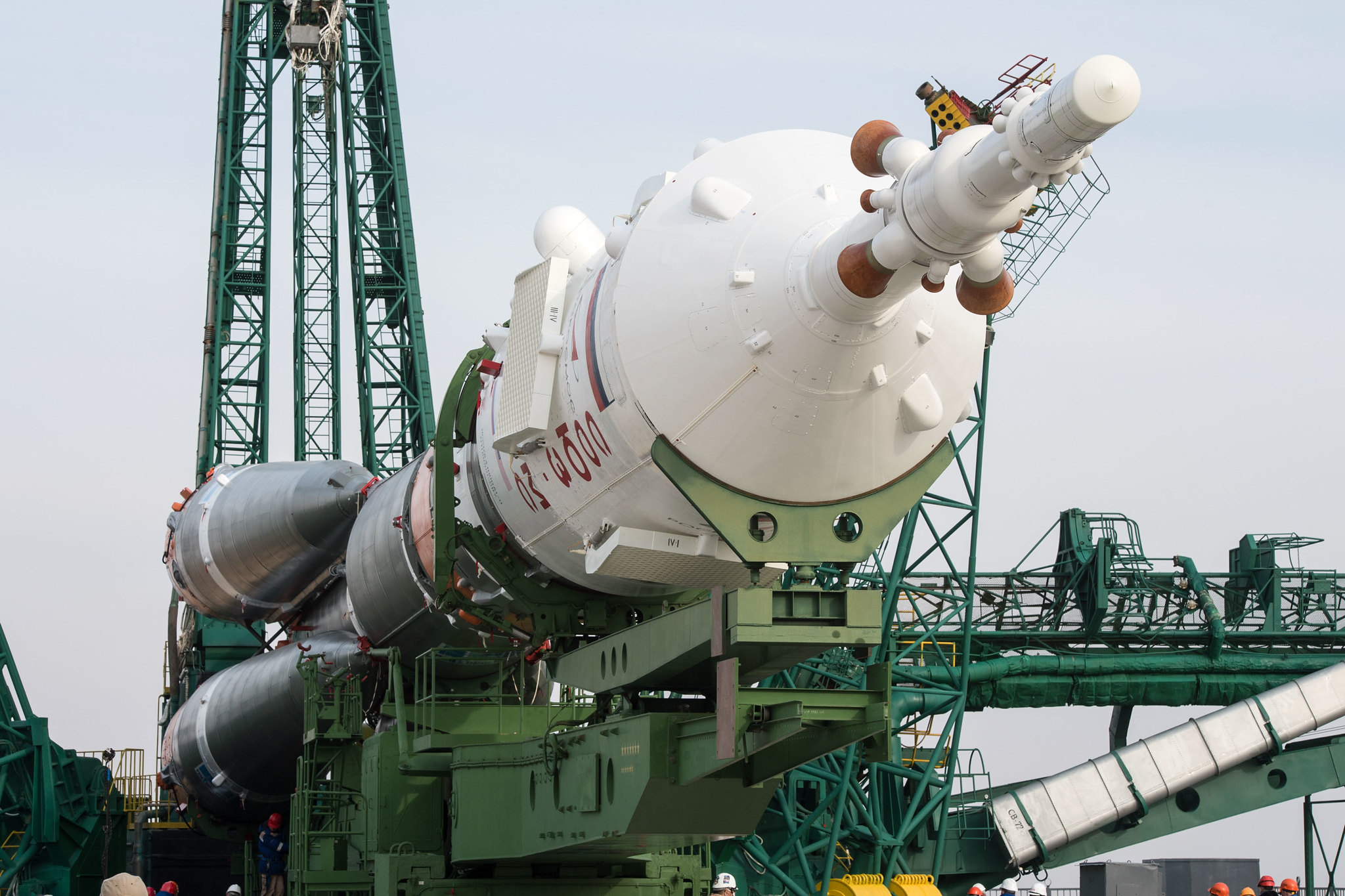
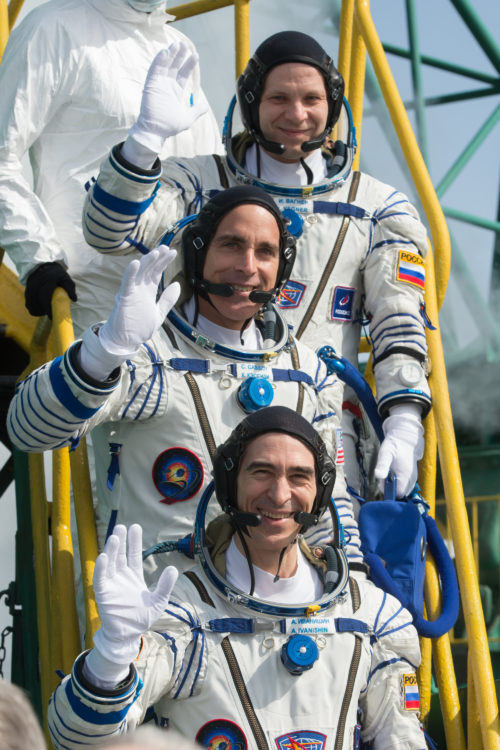
Rounding out the Soyuz MS-16 crew, in the right-side Flight Engineer-2 couch, is 50-year-old Chris Cassidy, a veteran of one shuttle mission, one extended ISS increment and six sessions of Extravehicular Activity (EVA). All told, the U.S. Navy captain and former SEAL has logged almost 182 days in space and over 31 hours of spacewalking time. Born in Salem, Mass., in January 1970, Cassidy was educated in York, Maine, before graduating from the Naval Academy Preparatory School in Newport, R.I., and earning a degree in mathematics from the Naval Academy in 1993.
He served for a decade as a Navy SEAL , deploying twice to Afghanistan and twice to the Mediterranean Sea, and in 2000 gained a master’s degree in ocean engineering from MIT. Selected by NASA as an astronaut candidate in May 2004, Cassidy first flew as a Mission Specialist aboard shuttle Endeavour on STS-127 in July 2009, during which the outer “porch” of Japan’s Kibo lab was installed onto the ISS. Four years later, in March-September 2013, he served as a flight engineer for Expeditions 35 and 36, before rotating into positions of increasing seniority within the NASA Astronaut Corps: leading the EVA and Robotics Branch from 2014, becoming deputy chief astronaut in April 2015 and heading up the Astronaut Office from July 2015 through June 2017.
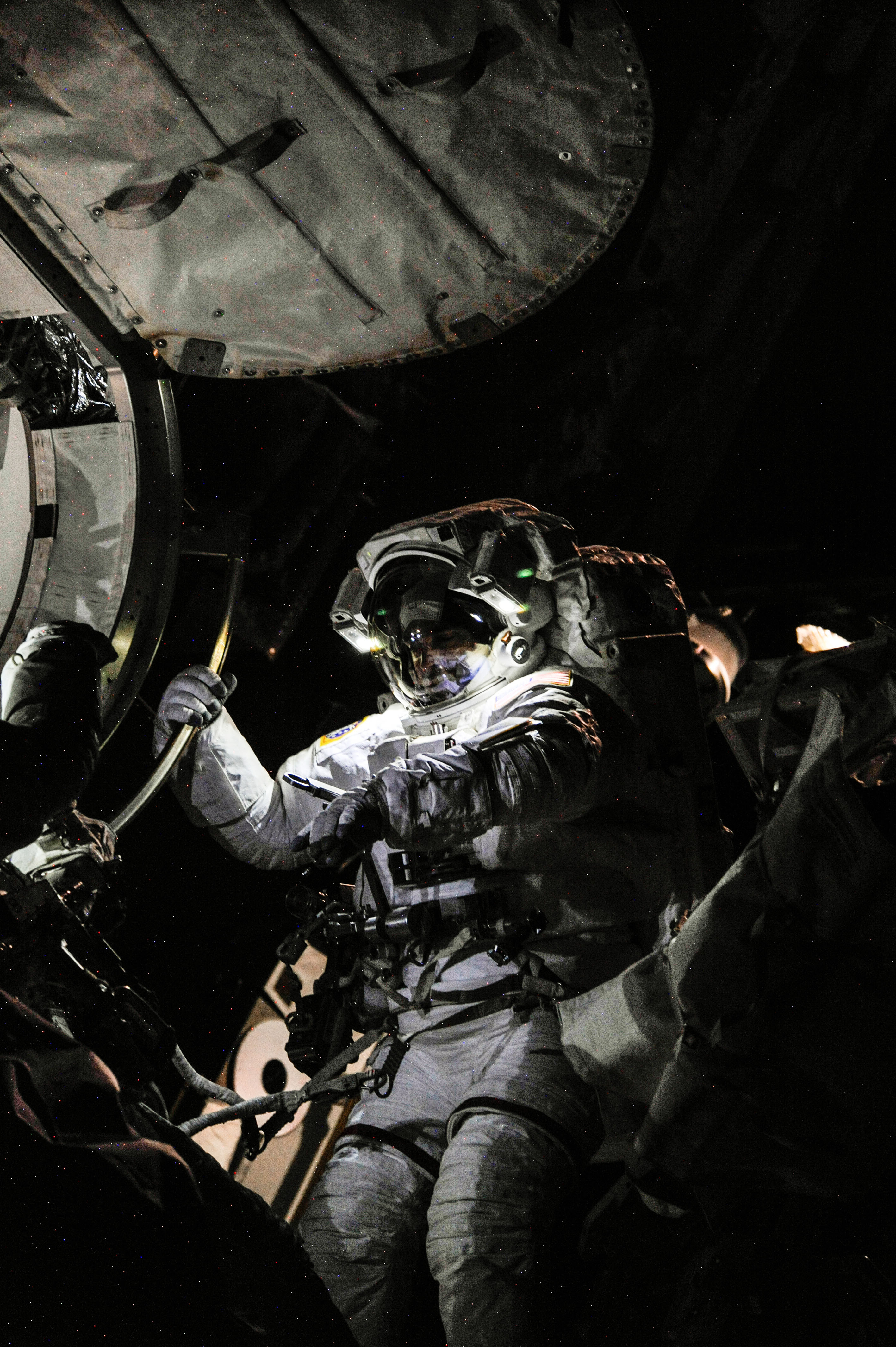
Launch occurred on time at 1:05 p.m. local time (4:05 a.m. EDT) and the Soyuz-2.1a performed to perfection on its first mission with humans aboard, delivering approximately 933,000 pounds (423,000 kg) of propulsive yield from its single RD-108A first-stage engine and the RD-107A engines of its four tapering, strap-on boosters to lift Ivanishin, Vagner and Cassidy towards their six-month home in the sky. Two minutes into the flight, the strap-on boosters were jettisoned and the RD-108A continued to burn hot and hard, before itself burning out at five minutes. The Soyuz-2.1a’s third stage then ignited, its single RD-0110 engine pushing the crew close to orbital velocity. By the time it shut down a little under nine minutes after liftoff, the booster had injected Soyuz MS-16 into a preliminary orbit with an apogee of 143 miles (230 km) and a perigee of 118 miles (190 km), inclined 51.66 degrees to the equator.
Arriving at the ISS six hours and eight minutes after launch—and becoming the 21st Soyuz crew to successfully execute a short, four-orbit “fast rendezvous” with the station since Soyuz TMA-06M, whose crew also included Chris Cassidy, back in March 2013—the new arrivals were welcomed by incumbent Expedition 63 Commander Oleg Skripochka and Flight Engineers Drew Morgan and Jessica Meir. Docking occurred at 10:13 a.m. EDT. And with a weeklong “handover” period ahead, it is expected that Skripochka, Morgan and Meir will depart the station in their Soyuz MS-15 spacecraft and return to Earth on 17 April. Morgan will wrap up a long-duration increment of 271 days since his launch last July, whilst Skripochka and Meir complete 204 days since their own launch last September. Cassidy will assume command of the space station as Expedition 63 officially begins.
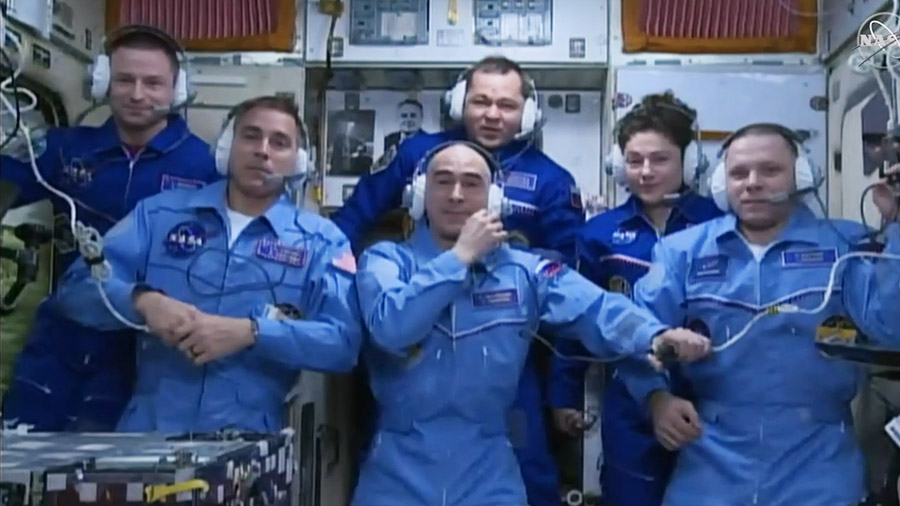
Current plans are for SpaceX’s first piloted Crew Dragon, bearing NASA astronauts Doug Hurley and Bob Behnken on the long-awaited Demo-2 mission, to fly in the mid-to-late May timeframe. It remains to be seen how long the duo will remain aboard the ISS; whether for their originally baselined two-week test flight or perhaps for a longer stay of several months, returning to Earth in late September or early October. Certainly, Behnken has participated in Extravehicular Activity (EVA) training at the Johnson Space Center (JSC) in Houston, Texas, in recent weeks, possibly with a view to having him go outside with Cassidy for a number of critical U.S. spacewalks over the summer. Around six EVAs are planned to replace aging nickel-hydrogen batteries aboard the S-6 truss with improved lithium-ion units, plus another excursion to complete the installation of the Barolomeo payload carrier and the British-built Columbus Ka-band Antenna (ColKA) onto the European lab.
An equally busy manifest of visiting vehicles is anticipated in the coming months, although Boeing’s recent decision to add a second uncrewed test mission of its problem-plagued CST-100 Starliner—likely no sooner than October/November—means that the first piloted mission, bearing NASA astronauts Mike Fincke and Nicole Mann and former shuttle commander Chris Ferguson will occur sometime in 2021. Two Russian Progress supply ships are slated to launch in late April and late July, together with Japan’s H-II Transfer Vehicle (HTV-9) scheduled for late May and the Northrop Grumman Corp. NG-14 Cygnus in the second week of September. Cassidy’s increment will be relieved in mid-October by Soyuz MS-17, which is expected to include Russian cosmonauts Nikolai Tikhonov and Andrei Babkin, together with seasoned NASA astronaut and veteran spacewalker Steve Bowen. If all goes according to plan, Ivanishin, Vagner and Cassidy will return to Earth towards the end of October, wrapping up over 195 days in orbit.
.
.
FOLLOW AmericaSpace on Facebook and Twitter!
.
.




